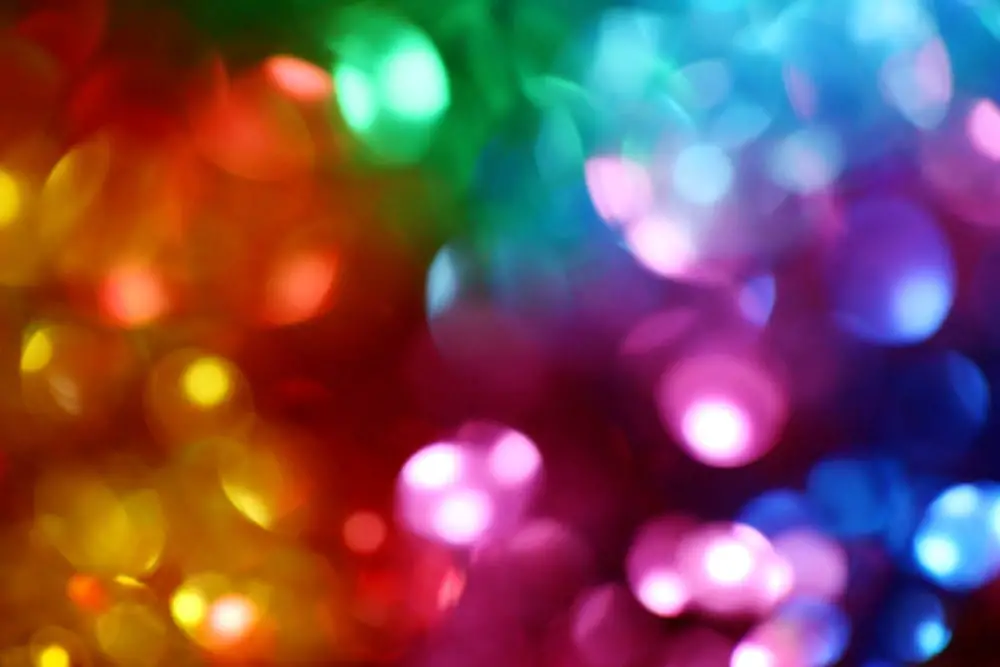
What is chromotherapy?
It is not really a single, closed technique. Color therapy is a technique of alternative medicine that uses the colors of the light spectrum and the properties they are believed to possess to influence the improvement of the state of health physical and psychological.
In this way, it argues that colors influence mood and that different wavelengths of these generate vibrations that affect the body and mind.
There are many people who believe that health and disease are related to an energy transmitted and received by the organism and consider, therefore, that the color and its vibrations can influence the evolution (and thus the improvement or worsening) of diseases.
However, it has not been scientifically proven that this is true, so it cannot be assured.
In principle, chromotherapy is a harmless technique, used as a complement and provided that we do not leave aside medical treatments that can help us heal or improve and the best thing is that it can be used along with other techniques.
How to apply the color therapy technique
Chromotherapy can be applied in different ways, depending on the vehicle used to emit the light and, therefore, to generate the colors to be used during the treatment.
For example, through the visualization of light (colored) emitted by spotlights and bulbs (one of the most commonly used ways), but also through the visualization of colored fabrics and textiles, both by direct observation of these and by contact with the clothing when we wear them (have you never dressed in a particular color because you felt or wanted to feel a certain emotion?), and even though the intake of water "informed" with a certain color or colored food selected according to the effect to be achieved.
It is also applied in architecture or decoration, through the use of color in structures and elements, through chromo puncture, which is the application of a beam of light of the desired color in the usual acupuncture points, or visualizing different colors through meditation, so that the session is associated with a specific mood.
The indication of the colors to be used in each specific case will be determined according to the interpretation that is made at each moment of the colors and the sessions usually last between 30 and 60 minutes, approximately, depending on how the technique is being applied.
The doubt that arises at this point is how to determine the real effectiveness of chromotherapy, since the perception of color is associated with cultural traits and, therefore, subjective.
So, not everyone is stimulated by red and relaxed by blue. It will depend on the environment and culture in which you have grown up.
Where does chromotherapy come from?
Color therapy is an ancient technique, which draws directly from ancient Chinese medicine, from India and ancient Greece.
In India it is related to the knowledge of the chakra system, to each of which a color is associated.
In turn, that color has a function or property determined in relation to that chakra and the organs and emotions it governs or controls
Later, in the early twentieth century, modern theories about how color can be able to heal the body and mind began, receiving influences from other alternative therapies, such as homeopathy, and also drinks in the psychology of color, which attributes to each color the ability to generate certain emotions.
Thus, Alfredo Pérez Sáinz de la Maza, President of the Spanish Association of Wellness and Spa in 2015, clarified that same year that chromotherapy "works on the psychology of color with a language that can be learned and that helps you improve your health, your mood..."
.
How do colors act on our well-being?
There are actually many interpretations of the vibration that each color can induce on a person and, sometimes, you may even find opposite properties to each other for the same color.
And, as I said, the perception of colors and the emotions, sensations and concepts that we associate with each of them are closely linked to our cultural and social experiences, as has long and extensively studied the psychology of color.
Experiments have even been done to test whether, in a room painted with cold colors, the temperature actually goes down or in a room painted with warm colors, it goes up.
But the only conclusion that has been reached so far is that when we enter a room painted in warm colors our brain interprets that it is warmer and when we enter a room decorated in cool tones, it interprets the opposite.
This would be the effect of the primary and secondary colors according to the theorists of chromotherapy:
Red
- It is a stimulating color and conveys strength, energy, and initiative.
- It is attributed to the property of warming the body, so it would help you feel more active and energetic.
- It is indicated for atonias (lack of will or reaction), for apathy and, they say, for hypotension and colds.
- It helps to overcome negative thoughts and improve athletic performance.
- It is associated with assertiveness and also aggression, as well as increased desire, sexual activity, ovulation, and menstruation.
- It is associated with assertiveness and also aggression, as well as increased desire, sexual activity, ovulation, and menstruation.
- But in excess, it could induce irritability, fatigue, and nervousness, so it is not recommended for use in cases of anxiety.
Yellow
- It is popularly known as the color of joy, clarity, and enthusiasm. The color of the sun is considered purifying and is attributed to the ability to improve concentration and reflexes, stimulating the brain and awakening inspiration.
- It is the color of communication, learning, flexibility, and progress.
- Although in excess it can be annoying, so it is not recommended for people with irritability.
Blue
- For many people, blue is the color of calmness.
- It is said to have relaxing properties (by association with the sea, the sky...) and is a natural calming agent.
- It awakens intuition and, when combined with green, also the talent.
- Cool and serene color, it clears the mind and is used for ailments related to speech, communication, and throat.
- However, in excess it can be sad, so it is not recommended in cases where one suffers from melancholy and self-absorption.
Orange
- Secondary colors "inherit", so to speak, the perceptual properties of the colors that generate them.
- Thus, orange is encouraging, optimistic and anti-fatigue. It is energetic and cheerful.
- It is used as a sexual tonic, but also for the treatment of excess libido.
- It promotes emotional health, communication, and creativity and combats mental blockages. Therefore, it is considered to have much influence on intellect and fitness. In addition, it conveys courage in cases of introversion and is a color that frees the body and mind.
- However, used in excess, it can generate nervousness and agitation.
Green
- Both in the psychology of color and in its use in chromotherapy, the color green draws from the properties of blue and yellow:
- It soothes physical and mental fatigue while being considered restorative.
- It is the color of optimism and hope, relaxing, calming, and refreshing, and conveys harmony, balance, and emotional stability.
- It stimulates concentration and helps with insomnia, although an excess of green can produce depression and weakness.
Violet
- With the combination of the energy of red and the calmness of blue, violet is the color associated with spirituality and intuition.
- It is a color that calms and soothes, favors inspiration and imagination, and helps meditation and transformation.
- In chromotherapy, it is used to decrease anxiety, fear, and memory problems and helps in the emotional management of anger or insomnia.
- However, in excess, it can lead to sadness or anger.
In conclusion, with the data that exist today we cannot affirm that chromotherapy is a technique capable of curing illnesses or improving physical condition.
But what we can say is that colors provoke emotions and sensations and, from this point of view, chromotherapy can be a technique that helps to restore well-being, as a complement to other treatments.
And, in any case, what we are sure of is that if you choose a chromotherapy treatment in any of the centers that offer it, you will enjoy a different and very relaxing experience.
Have you already tried chromotherapy?




